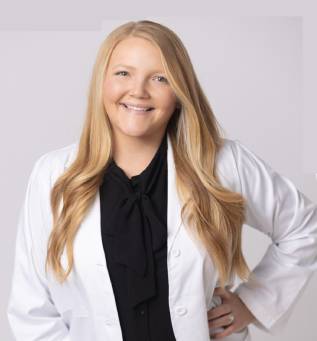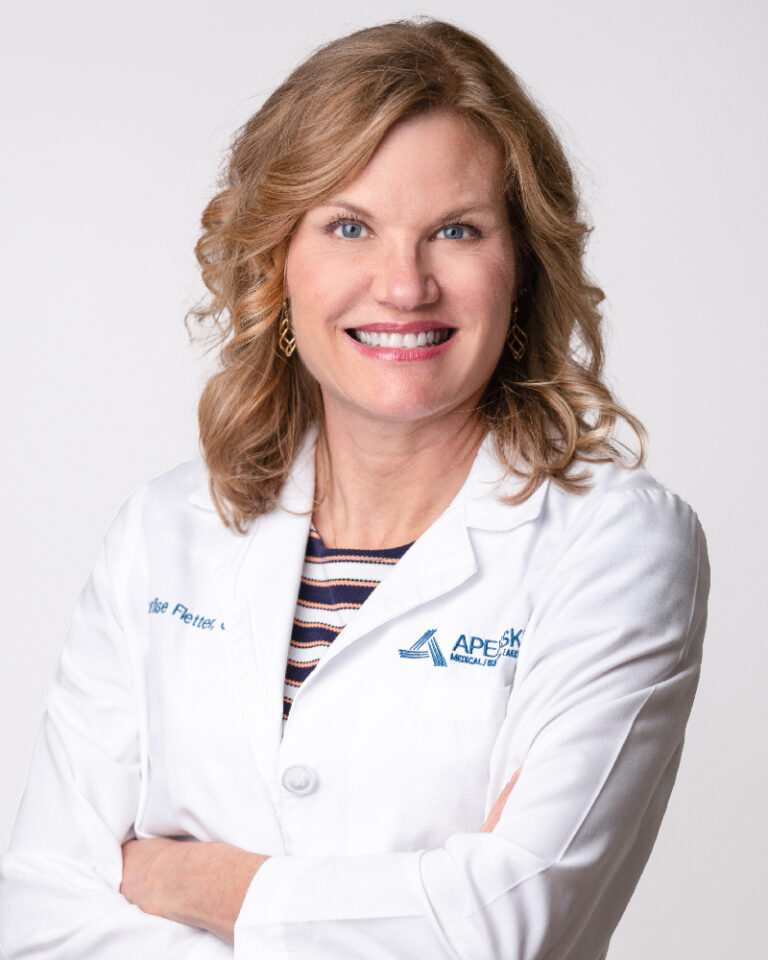
5 Common Misconceptions About Clinical Trials—Busted
May 12, 2025Dermatology clinical trials. You’ve heard of them. Maybe you’ve even considered joining one, but you’re unsure what it would mean for you. You’re curious, but also a little hesitant. We get that. The Apex Clinical Research Center team understands that signing up to participate in clinical trials can feel unfamiliar and intimidating. Today, we’d like to talk about what a clinical trial is, why people decide to participate, and what you can expect each step of the way. Members of our skincare research team will also offer their insights into how things work, and what it has meant for the volunteer patients we’ve worked with. We hope that this will demystify what it means to participate in dermatology research and encourage you to learn more about it. As always, if you have additional questions about the process that we haven’t answered here, we invite you to contact us for answers!
What is a Clinical Trial?
Clinical trials are rigorous scientific studies involving volunteers who agree to test new treatments for various conditions. Considerable research and testing have already been done on these treatments before study participants enter the picture, and rigorous safety protocols are also established well before asking for volunteers.
Volunteers who fit the study criteria then help researchers test new procedures, medications, or devices. In most cases, the volunteers are randomly split into separate groups. One group receives the new treatment while the other group receives either a placebo (non-active therapy) or a currently-available treatment. Each group gets intensive monitoring for side effects, and all care associated with the trial is free.
Volunteers often join clinical trials because they are eager to try new treatments for conditions they have. Many are dedicated to helping fellow patients with similar conditions to find better treatments than those that already exist. Several volunteers are curious about how the scientific process works and want to participate firsthand.
“At Apex Clinical Research Center, we understand that joining a clinical trial is more than just a medical decision—it’s a meaningful contribution to the future of dermatology,” says Research Site Manager Brooke Glivar. “We go above and beyond to make our patients feel valued, comfortable, and informed every step of the way. Most importantly, we make sure they know their participation is helping to advance medicine and improve the lives of others. They’re not just part of a study—they’re part of something bigger.”
If you think about it, all the medical treatments that currently benefit millions of people today were tested before with clinical trial volunteers. Those who volunteer to participate in clinical trials really are unsung heroes to millions. Keep in mind: nobody is obligated to join dermatology clinical trials, and participants are fully informed about the process and provide informed consent before joining. So, let's describe that process:
Step 1: From Expressing Interest in "Clinical Trials Near Me" to Pre-Screening
Many people first hear about clinical trial opportunities through social media, websites, advertising, or referrals from their healthcare providers. Some volunteers even run a Google search with “clinical trials near me” to find opportunities they might be interested in. A prospective volunteer then has the option to contact the study team, either by calling a phone number, filling out a form, or sending an email.
“When an individual is interested in learning more about a study, the research team makes it a priority to answer all their questions, giving each patient as much time as needed to review the answers,” explains VP of Research Operations Theresa Hanslik. “In most studies, health and medical information is collected. This is to ensure there are no other illnesses or abnormalities before being enrolled in the study.”
This initial exploratory phase is important for both the volunteer and the dermatology research team. The volunteer has a chance to ask questions, review the course of the study, understand how much time and involvement it will take, and what to expect. The researchers use this time to ask questions to determine if a volunteer fits the study criteria.
For example, volunteers typically need to be over the age of 18 and have an active diagnosis of the condition the study treatment is meant to alleviate. Beyond that, each study has its own specific criteria. These initial screening discussions will take place in ways convenient to the prospective volunteer.
“At Apex Clinical Research Center, we have a variety of methods of contacting patients based on their preferences,” says Clinical Research Program Lead Caroline Matyas. “We communicate with patients via phone, text, or email. During these contacts, a study coordinator discusses the patient's medical history and the trial options that they might be interested in. Patients can ask any questions they may have, and a medical provider is also available during contact for any medical treatment questions. The trial requirements are discussed, as well as the risks and benefits to the patient for participating. The study coordinator also discusses alternative options, like scheduling with a dermatologist provider in our clinic.”
Step 2: Informed Consent
Once a volunteer has gone through the initial screening process and been found eligible to participate, the volunteer can still decide whether or not they want to sign up to participate in the study.
“A common myth about clinical trials is that participants are treated as ‘guinea pigs’ and subjected to dangerous, untested treatments,” says Clinical Research Operations Coordinator Hannah Birckline. “We let patients know that clinical trials are heavily regulated with ethical oversight, stringent informed consent processes, and safety monitoring to ensure participant safety. While risks exist, they are carefully managed, and trials often provide access to cutting-edge treatments under close medical supervision.”
Volunteers are informed of all of these things before they agree to participate. The informed consent process goes beyond just paperwork. During the informed consent stage, we make sure potential volunteers understand their rights and the study process. The volunteers have additional opportunities to ask even more questions that came up during the screening process. Apex Clinical Research Center prioritizes patient understanding before the informed consent documents for skincare research are signed.
“Apex Clinical Research Center has a very inclusive team of study coordinators who make patients feel comfortable during the consent process,” adds Maytas. “During the initial contact, the patient is educated on what the Informed Consent Form is. When a patient comes into our office to join a study, the consent form is presented to the patient in a private setting, and a study coordinator and medical provider are available to answer questions and review the consent form with the patient prior to signing. The patient is also made aware that all of our trials are voluntary, and they can withdraw their consent at any time, for any reason.”
Step 3: The Initial Screening Visit
Once a volunteer has contacted us and we’ve had those crucial, initial discussions about our dermatology research, we schedule a screening appointment where testing, vitals, and bloodwork will be done in order to establish that there are no underlying conditions that could preclude the volunteer from participating. This is the visit where final eligibility to participate in the dermatology clinical trials is established before official enrollment.
“During the first visit, a patient is brought to a private clinic room,” explains Maytas. “Patients are welcome to bring family members with them to have support during the trial visits. Patients are first presented with the consent form to sign before any other procedure. After signing the consent form, the study coordinator follows the protocol-required procedures for the specific visit. This typically includes reviewing medical history and current medications the patient is taking, vitals assessment, EKG, and applicable bloodwork. The medical provider then assesses the patient with a thorough skin exam and physical exam. After the visit is complete, the patient receives a stipend card from the site, and the patient is scheduled for their next visit.”
Again, one of the great things for people who participate in clinical trials is the high and detailed level of care patients receive, and that all of this care comes at no cost to the volunteers.
“All tests and blood work are of no cost to the patient or insurance,” adds Hanslik. “Most studies also provide a stipend for time and travel. The patient is never billed for any procedures. In my experience, the majority of research participants report having had a positive experience and report that they felt well cared for. We wish more patients had the opportunity to enroll in a study. If anything, I want people to know that clinical research studies can be a very rewarding experience.”
Step 4: Participating in Your Skincare Research Study
During the trial, volunteers will be given a schedule to follow for visits during which vitals and medical information will continue to be collected as the study treatment is applied under careful supervision. Each dermatology research clinical trial will have its own specific data collection criteria and appointment schedule.
“Developing relationships with our trial participants is my favorite part of working on clinical trials,” says Certified Nurse Practitioner, Sub-Investigator Marlise Fletter. “We see patients weekly, every other week, or monthly with most of our studies. Therefore, we spend a lot of time with them. It gives them the opportunity to get to know us and trust us. They often share wonderful stories about their lives and sometimes bring family to meet us. We are fortunate to celebrate their successes and offer support when things aren't going well. It's truly rewarding to be making such a difference in people's lives.”
During each visit, we collect detailed information from our volunteers, and we guide and help them through the process each step of the way. Dermatology clinical trials can run anywhere from months to a year or more. It’s important to keep regular appointments, so if anything happens that could interfere with the schedule, volunteers need to contact the team as soon as possible to make alternative arrangements.
Step 5: Support Throughout the Trial
Throughout the trial, the skincare research team has a detailed process to track symptoms and side effects during each appointment. Volunteers can also contact the team between appointments with concerns, and we can help with side-effect management.
“While in a trial, any new symptoms are documented and evaluated, even something as simple as a sore throat or nausea,” says Hanslik. “The research doctor will always ask the patient how he/she is feeling and if any new problems have come about. If the patient has a potential side effect, the research team will evaluate and determine if it could be related to the study medicine. Most of the time, these new complaints are not due to study participation, however, no concerns are dismissed. Our study staff listens and follows up with any new issues, whether they are related to the study or not.”
When volunteers participate in clinical trials, the data we collect is so detailed that we sometimes even discover medical concerns volunteers didn’t know about before, as Hanslik explains:
“Our team recently had a patient who had a heart arrhythmia,” she says. “This was discovered during the screening process. Luckily, the research doctor sent the patient to a heart specialist, and the issue was resolved. The patient was then enrolled in a study that helped his skin disease.”
Step 6: Study Completion & What’s Next
Our team continues to collect the same detailed data and help manage side effects during every appointment, including the final visits. And because Apex Clinical Research Center is part of Apex Skin’s 15-location dermatology clinic network, the data and care notes for each patient can then be sent to your dermatologist for further continuity of care once the study concludes.
“Apex Clinical Research Center is unique, and in many ways, sets itself apart from most research centers,” says Hanslik. “The research center is embedded within the larger Apex Skin dermatology practice, founded by Dr. Jorge Garcia. The dermatology network consists of 45 dermatology providers across 15 Northeast Ohio dermatology clinics. The patients being seen by Apex Skin dermatology providers have first dibs at getting into a clinical trial. Continuity of care is ensured with communications between the research team and the patients’ referring providers. Patients are informed of what to expect at every step in the process. We see the whole patient and, therefore, will refer a patient to outside specialists, if needed for other non-dermatological concerns.”
Of course, if a volunteer finds one of our dermatology research clinical trials through a “clinical trials near me” search, there’s no obligation to continue with Apex beyond the trial, and your care transitions are always respected, and your dermatologist can request the study data to further assist you in your care. “Each study patient will return to his/her dermatologist upon study completion,” says Hanslik.
What it Means to Participate in Dermatology Clinical Trials: A Patient Experience
The majority of patient volunteers in our skincare research have overwhelmingly positive experiences with the level of care they receive during our clinical trials. Fletter shares one particularly inspiring patient experience:
“Patients are often grateful for the clinical trial experience,” she says. “One patient who participated in one of our psoriasis trials came in with psoriasis on 85 percent of his body. He was so sick that he was on the verge of needing to be hospitalized to get control of his condition. The idea of hospitalization was a stressor because he had poor insurance coverage. We were able to enroll him in a study with one of the injectable biologic medications. After just one shot, he saw significant improvement. By the 3rd injection, his skin was clear. The medication and all of the testing were provided to him for free, and he was paid a stipend to participate. He was so happy and thankful!”
Key Takeaways about Dermatology Clinical Trials
At Apex Clinical Research Center, we understand that participating in skincare research can be a difficult decision and that there are often misconceptions about what it means to participate in clinical trials. For our patients, however, it is generally a very rewarding experience on many levels.
- Dermatology clinical trials are tightly controlled, strictly designed scientific studies with intensive safety protocols designed long before volunteers are recruited to participate.
- Clinical trial participants are not guinea pigs. Study medications used have already been through considerable research. Volunteers go through an intensive screening process, are given an extensive informed consent process, and can exit the study at any time, for any reason.
- The doctors, nurses, and scientists guiding volunteers through the research study treat you as a whole patient, not just as the subject of a study. They care about your well-being and will refer you to other healthcare providers if they discover any problems. Your safety and comfort are important to them.
- Researchers must follow strict safety protocols, report to ethics boards, and honor participants' rights.
- Participating in dermatology clinical trials can open the door to better treatments for a wide range of skin conditions, which can help the volunteers themselves and thousands of other patients, too.
Participate in Clinical Trials for Dermatology Research
Participating in a clinical trial is a brave and generous act that can help the volunteer as well as so many other patients with difficult skin conditions. The Apex Clinical Research Center supports and gets to know volunteers personally, treating them as a whole person with respect and personal care all along the way. If you have been considering joining a clinical trial, but have been unsure about what it means, please look through our current list of research studies to see if one interests you, and then contact us with questions. You’re under no obligation to participate just for asking! And just asking might be the first step to finding better care for yourself, and so many others.







